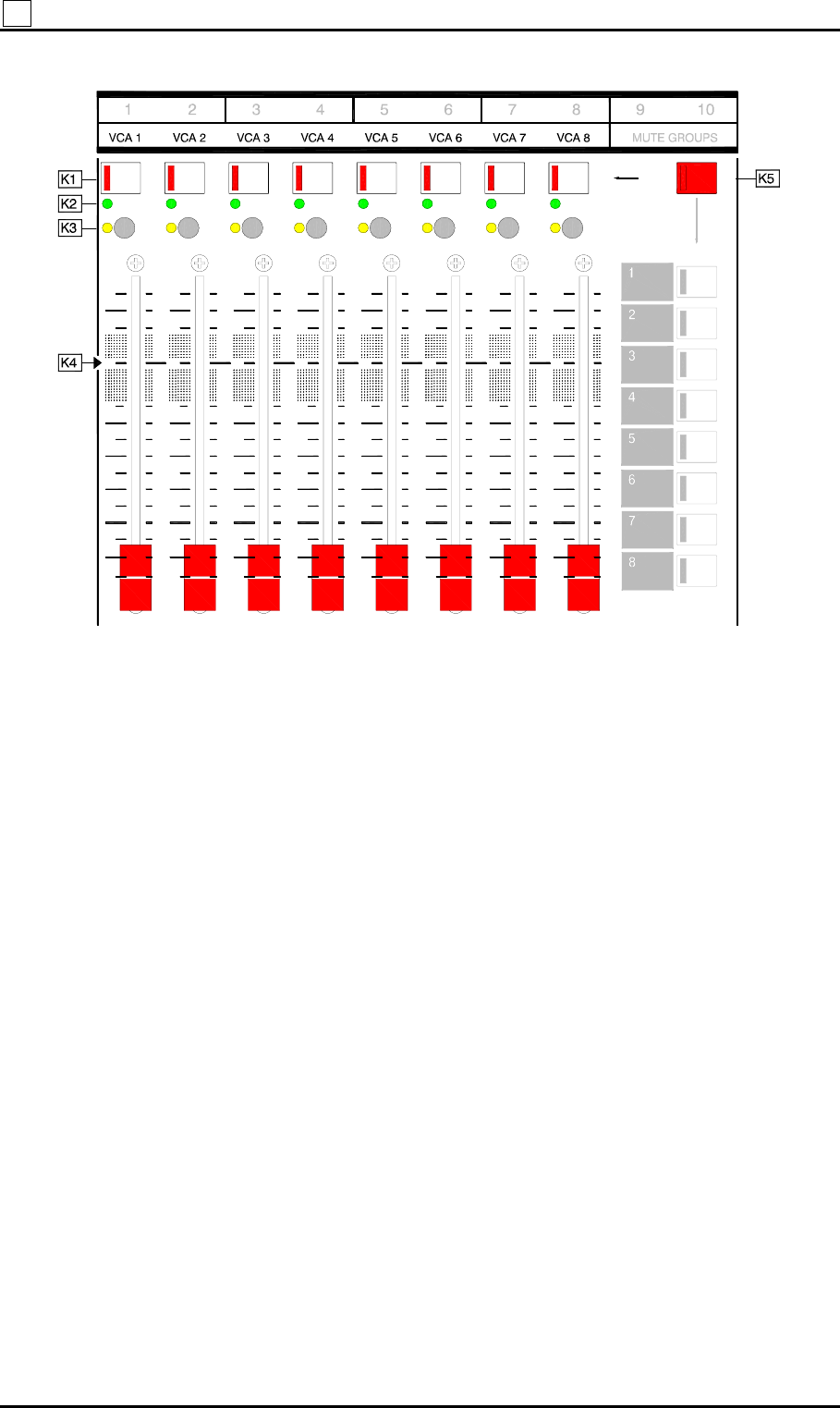Operation Manual

38 ML5000 User Guide
K VCA GROUPS
VCA Groups Explained
VCA groups provide an important alternative to
audio subgroups for simultaneously controlling the
level of more than one channel using a single fader.
Unlike an audio subgroup the signal is not routed
through the group fader itself. Instead, you route
the signal directly to the main output. The VCA
group fader sends a DC voltage to remotely control
the assigned channel levels, so providing the group
control. This is possible because each channel has
a pre-pan VCA (voltage controlled amplifier) which
can be controlled by both the channel fader and
group faders. This means that all post-fade outputs
from assigned channels will be affected by the VCA
master faders. Note that the channel pre-fade
(monitor) sends are not affected by VCA groups.
Note that the channel fader always controls the
signal level. If the channel is assigned to one or
more VCA groups then both the channel and the
group faders control the level as if they were in
series. Refer to the diagrams over the page.
The ML5000 has 8 VCA groups. Mono and stereo
input channels can be assigned to one or more
groups. The VCA group assignments can be stored
as part of the console snapshot memory system.
This can be disabled if you want the snapshots to
control the mutes only.
The benefits of VCA grouping
Effects balance is maintained. Because the
channel post-fade sends are affected, the reverb
level returned elsewhere in the console also follows
the group fader movements.
Stereo groups on one fader. Because the level is
controlled before the channel pan circuit, a single
VCA group fader is all that is required to control a
stereo or LCR group. This would take 2 or 3 faders
using audio groups if the channel pan image is to
be maintained.
Multiple output control. The relative balance
between all outputs is maintained when moving
VCA group faders.
Multi-level grouping. A channel can be assigned
to more than one VCA group. This lets you assign
multi-level groups, or even a ‘grand master’,
impossible with audio groups.
Conventional audio groups are still useful when you
need to insert a signal processor such as a
compressor to affect a group of signals, or you need
to feed different groups of signals into the matrix.
However, fewer such groups are usually required
on a VCA equipped console. For this reason the
ML5000 provides the mode switching to reconfigure
unused audio groups as full featured aux sends.
OO
40
30
5
0
10
5
10
20
OO
40
30
5
0
10
5
10
20
OO
40
30
5
0
10
5
10
20
OO
40
30
5
0
10
5
10
20
PAFLPAFLPAFLPAFLPAFLPAFLPAFLPAFL
SAFE
M
U
T
E
SAFE SAFE SAFE SAFE SAFE SAFE SAFE
EDIT
GROUP
SELECT GROUP TO EDIT
M
U
T
E
M
U
T
E
M
U
T
E
M
U
T
E
M
U
T
E
M
U
T
E
M
U
T
E
MUTE
NOM
ASSIGN USING CH MUTES
10
20
OO
40
30
5
0
10
5
10
20
OO
40
30
5
0
10
5
10
20
OO
40
30
5
0
10
5
10
20
OO
40
30
5
0
10
5










